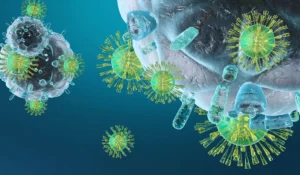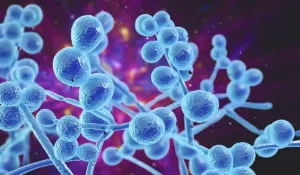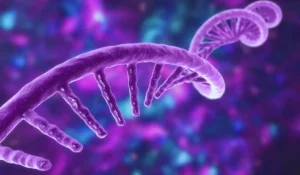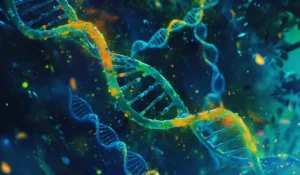What is Fabry disease?
Fabry disease is a rare genetic disorder that affects the X chromosome. It is linked with pathogenic mutations in the GLA gene that normally gives instructions to make an enzyme called alpha galactosidase A.
Alpha galactosidase A or Alpha-Gal A is active in lysosomes and lysosomes, they act as recycling centers that use digestive enzymes to break down excess or worn out components of cells and recycle the usable ones.
Alpha-Gal A is one such digestive enzyme in lysosomes and its function is to break down these huge molecules namely Glycosphingolipids like Globotriaosylceramide (GL3). These molecules then break down and are recycled to be used by the body.
But what happens without Alpha-Gal A?
There will be increased build up of GL3 molecules inside the lysosomes which further affects our physiology and health.
What are the symptoms of Fabry disease?
Fabry disease affects males and females, and there are two forms in which individuals get affected with Fabry disease:- Classic or early onset and Non classic or the Late Onset
Classic Fabry disease
Here, symptoms begin during childhood and it includes various sensations in the hands and feets i.e. burning, prickling, tingling and neuropathic pain too! These sensations are often triggered or activated by fatigue, stress, exercise or illness.
Also, the rate of sweating might decrease step by step from childhood until many teens and adults stop sweating entirely.
Occasionally, you could see tiny reddish-purple rashes referred to as Angiokeratomas around the lower abdomen and bathing trunk region of the human body. Besides, there could be gastrointestinal symptoms like diarrhea, constipation, and stomach cramps.
Cornea verticillata which is a whorl-like pattern present in the corneal epithelium is also another symptom of Classic Fabry disease which is detected during slit lamp eye exam. However, vision is not affected!
If Fabry disease is left untreated, it would lead to complications like cardiomegaly or enlargement of heart, abnormal heart rhythms, increased risk of stroke and kidney dysfunction.
Non-classic Fabry disease
Pain and gastrointestinal symptoms do not develop in childhood as in the case of classic fabry disease, but few adults tend to develop multiple symptoms. Others might only present signs in particular organs like heart or kidneys, but these individuals are at a huge risk of having Fabry-associated complications.
How is Fabry disease is diagnosed?
It depends on sex.
For males, blood testing can be done to detect the alpha-gal A levels as there will be low levels of it. This is further confirmed by gene analysis.
While for females, Gene analysis is the first thing to be done since the affected females do not show abnormal alpha-gla A levels in the blood, but it’ll be normal.
What is the treatment for Fabry disease?
There are 2 FDA approved therapy for Fabry disease. One is Enzyme replacement therapy with a synthetic alpha galactosidase A namely Agalsidase beta and the second one is a Chaperone therapy using Migalastat that aids in improving the residual enzyme activity.
Other than that, the additional therapy aims at Fabry disease associated health issues like drugs for neuropathic pain, to lower urine protein levels, for depression or treatments like renal transplants for kidney failure and pacemakers for arrhythmias.
Quick summary
Fabry disease is a rare genetic disorder that affects the X chromosome. It is caused by mutation in the GLA gene resulting in decreased alpha galactosidase A enzyme or alpha-gal A, leading to the buildup of large glycosphingolipids like Globotriaosylceramide (GL3) in lysosomes.
Symptoms are burning and prickling sensations in hands and feet, decreased sweating and angiokeratomas. If untreated, heart and kidney failure is the result.
Diagnosis is mainly done by blood and genetic testing, and the therapy includes synthetic alpha galactosidase A with Agalsidase beta, or chaperone therapy with Migalastat.
Reference
Encyclopedia of Molecular Mechanisms of Disease by Florian Lang
Encyclopedia of Molecular Biology by Thomas E. Creighton
Rare Diseases: Integrative PPPM Approach as the Medicine of the Future from Springer







